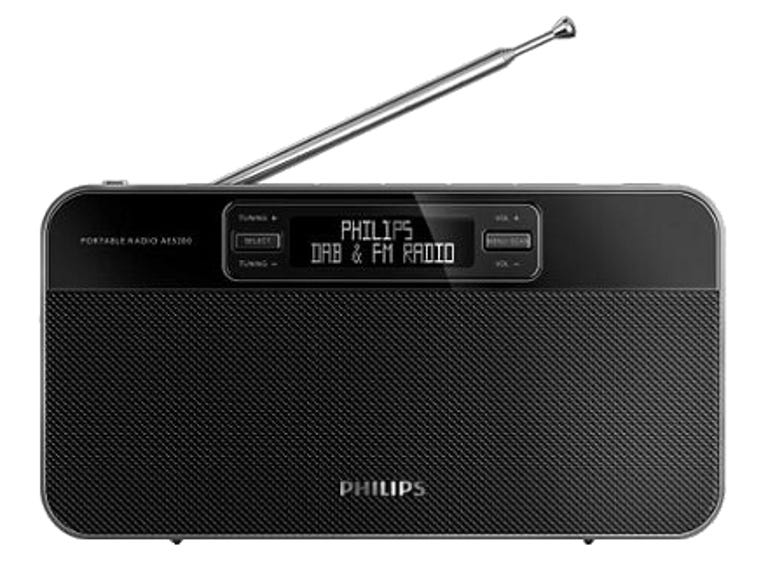 Why You Can Trust CNET
Why You Can Trust CNET Philips AE5200 review: Philips AE5200
The battery- or mains-powered AE5200 portable radio offers brilliant design touches, good looks and excellent FM reception for a reasonable price. Its DAB performance could be better and it eats batteries quickly, but it's an appealing machine nonetheless
Philips' AE5200 radio seems to offer the best of all worlds: good looks, portability, FM and DAB reception, and the choice of using battery or mains power -- all for £50. If you think it sounds too good to be true, your judgement is sound. The AE5200 checks all the boxes, but it's not without its flaws.
The Good
The Bad
The Bottom Line
Decent audio
You certainly wouldn't choose the AE5200 over a hi-fi, but, for its size, it's sound quality is quite passable. The output doesn't have great dynamic range, but it certainly isn't thin or reedy. There's a fair amount of bass and good treble, but the mid-tones are underwhelming. For spoken radio, it's fine, so it's a good choice if you plan on listening to BBC Radio 5 Live's commentary in the shed this season.
The AE5200 is battery- or mains-powered. You'll need to budget for a dozen AAs if you want to use it out of the house, though, since it takes six at a time and Philips reckons you'll get a meagre 9 hours of use from a full set on either FM or DAB. At that rate, a day on the beach could see it run dry.
Accomplished design
The build quality is commendable. The front is dominated by a smart black grille and glossy display. Each corner of the display features a rocker switch, for controlling the volume and scrolling through the various stations the radio can pick up. Two further buttons confirm your selection and open up the menus. It's a stroke of design brilliance that makes excellent use of meagre space.
The display's functionality is fairly run-of-the-mill, with sixteen characters on each of two lines, but it scrolls much faster than the screens on many more expensive radios, such as the Tivoli Model DAB and Roberts Revival RD-50, while it refreshes more smoothly than the screen on the Roberts Revival RD-60. As such, it's fairly accomplished, and doesn't keep you waiting for updates.
The preset buttons are ranged along the top, with five direct-access buttons and one further control that is effectively a shift key, doubling up the first five buttons with another bank of presets. This gives you a grand total of 20 slots to fill, split between FM and DAB.
Random volume
Unfortunately, the AE5200 has a mind of its own, and it's a mind that likes to shout. Set the volume at your preferred level, and, the next time you switch the radio on, it'll decide for itself how loud it should be. The default setting is fairly loud, which could be a problem if you're tuning in for some late-night listening.
In terms of connections, the AE5200 has no ambitions beyond providing a headphone socket. This isn't surprising -- a line-out port would probably defeat the object of a portable radio, and a line-in port for piping through your MP3s would be pointless without a better speaker.
The tuner is sensitive, picking up as many stations in our test area as a full-blown hi-fi, but it's not particularly resilient. We had to be careful where we put the AE5200, and walking around caused interference on DAB. There were no such problems with FM reception, which proved both sensitive and stable, but, without RDS, you'll have to tune by frequency alone. That's fine at home, but not so good on the road.
Conclusion
Philips aimed high with the AE5200, but it has a serious challenger in the shape of the PURE Digital One Mini, which isn't as pretty, but can be found for £10 or £20 less if you shop around online. Add to that the One Mini's 20-hour battery life using the optional ChargePak, compared to the AE5200's 9 hours on six AAs, and it becomes harder to recommend Philips' device.
Edited by Charles Kloet
